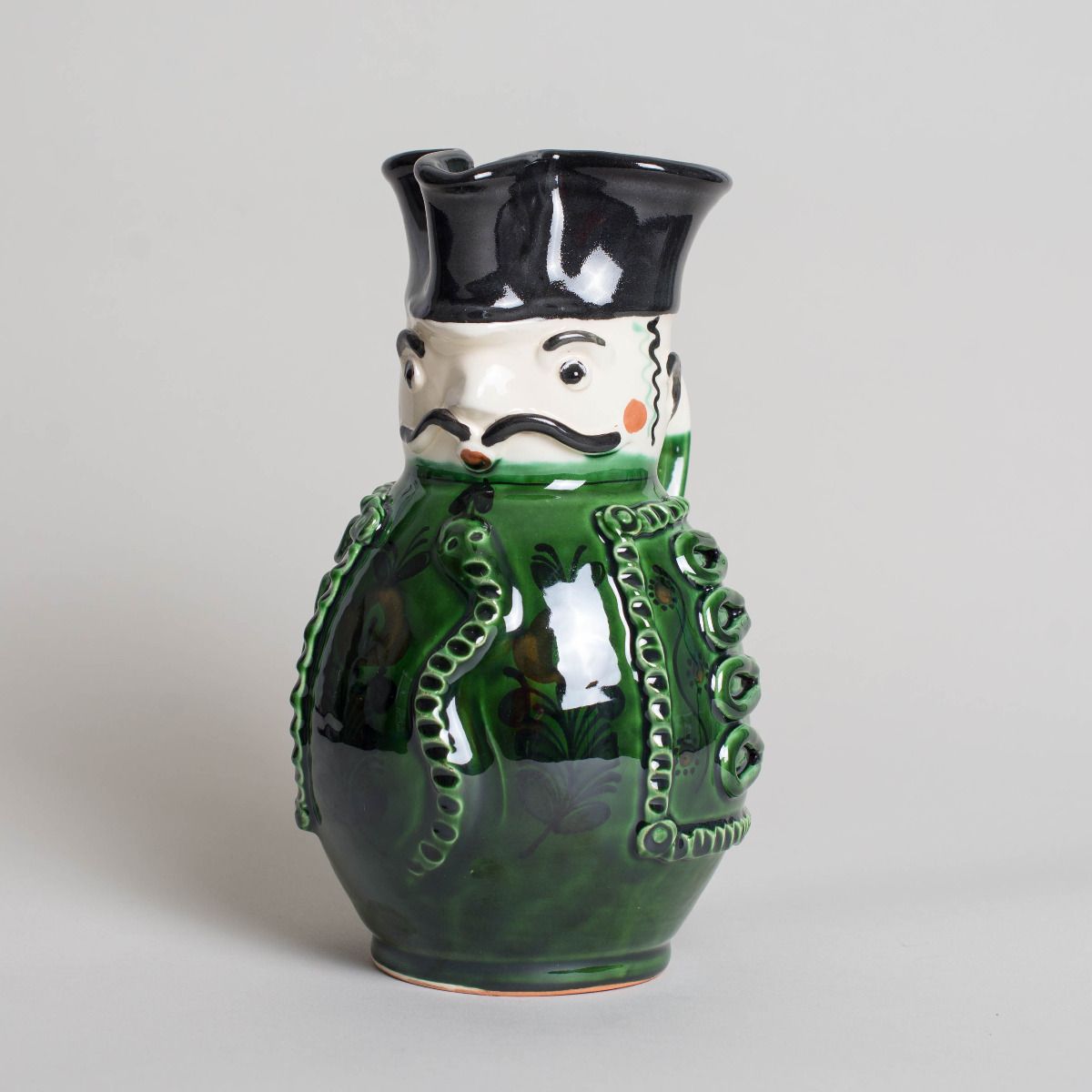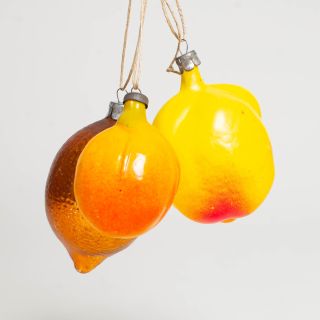Miska Kancso from Hungary - Large
28 cm
In addition to the towns of Mezőcsát and Tiszafüreden,
Mezőtúr is one of the Hungarian pottery centres,
and thus also the hussars jug production.
In Hungary, wine jugs in the form of a hussar are called Miskakancsó.
The Jug-husar should wear a Dolman,
a uniform jacket tied on the chest, and a magnificent hussar hat, the Shako.
A Hungarian hussar is not a hussar without the mustache.
In the broadest sense, the hussars as armed horsemen are the cowboys of Europe.
As a rule, the hussar has on his stomach a snake,
as a symbol of health and a long life.
Since ancient times, snakes have been associated with health.
Because they can shed their skin, they were thought to understand something
about rebirth and the mystery of eternal life.
With the help of their depictions, they wanted to win their favor
and keep the symbol alive through this constant presence.
In the past, it was believed in villages that a person lived
as long as others talk about them.
So with each jug of wine, eternal life came to the table.
***
Neben den Städten Mezőcsát und Tiszafüreden,
Mezőtúr eines der ungarischen Töpferzentren,
und damit auch der Husarenkrugproduktion.
Weinkrüge in Form eines Husaren werden in Ungarn Miskakancsó genannt.
Der Krughusar sollte einen Dolman tragen,
eine auf der Brust gebundene Uniformjacke, und einen prächtigen Husarenhut, den Shako.
Ein ungarischer Husar ist kein Husar ohne Schnurrbart.
Im weitesten Sinne sind die Husaren als bewaffnete Reiter die Cowboys von Europa.
In der Regel trägt der Husar eine Schlange auf dem Bauch,
als Symbol für Gesundheit und ein langes Leben.
Seit dem Altertum werden Schlangen mit Gesundheit in Verbindung gebracht.
Da sie sich häuten können, glaubte man, dass sie etwas über Wiedergeburt und das
über die Wiedergeburt und das Geheimnis des ewigen Lebens.
Mit Hilfe ihrer Darstellungen wollte man ihre Gunst gewinnen
und das Symbol durch diese ständige Präsenz am Leben erhalten.
In der Vergangenheit glaubte man in den Dörfern, dass ein Mensch so lange lebt
solange die anderen über ihn reden.
Mit jedem Krug Wein kam also ewiges Leben auf den Tisch.
International Wardrobe
(EN) The aim of International Wardrobe is to give traditional and ethnic home textiles a prospering plattform. With the worldwide aquisition and sale of particularly beautiful, antique and vintage ethnic textiles, clothings telling more about the history and cultural background, International Wardrobe is to nourish a contemporary approach towards clothing for people as well as for furniture. Their principal interest, and the focus on research is in the field of folk costumes and other textiles, which traditionally tend to be hand-made. International Wardrobe work together with artisans in different countrys like Romania, India, Bangladesh and Laos..
International Wardrobe was founded 2009 by the art historian, ethnologist and stylist Katharina Koppenwallner.
(DE) Das Ziel von International Wardrobe ist es, traditionellen und ethnischen Heimtextilien eine prosperierende Plattform zu geben. Mit dem weltweiten Ankauf und Verkauf besonders schöner, antiker und alter ethnischer Textilien, also Kleidungsstücke, die mehr über die Geschichte und den kulturellen Hintergrund erzählen, will International Wardrobe einen zeitgemäßen Umgang mit Kleidung für Menschen sowie für Möbel pflegen. Ihr Hauptinteresse und ihr Forschungsschwerpunkt liegt im Bereich der Volkstrachten und anderer Textilien, die traditionell eher handgefertigt sind. International Wardrobe arbeitet mit Kunsthandwerker:innen in verschiedenen Ländern wie Rumänien, Indien, Bangladesch und Laos zusammen.
International Wardrobe wurde 2009 von der Kunsthistorikerin, Ethnologin und Stylistin Katharina Koppenwallner gegründet.


